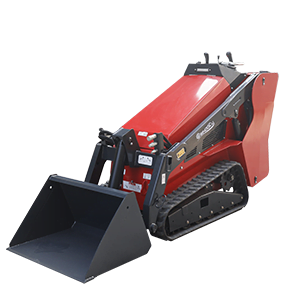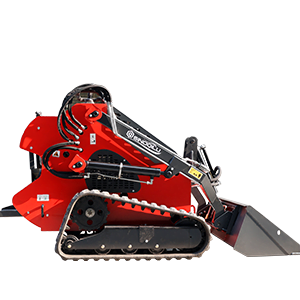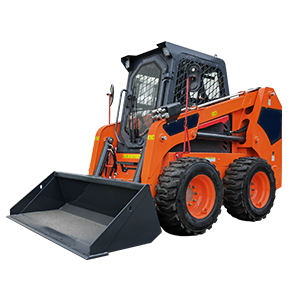E-mail: [email protected] WhatsApp: 8618266768780
Comment mesurer avec précision la capacité d'une chargeuse compacte
Bienvenue sur mon blog !
Avant de plonger dans le contenu, j'aimerais que vous me rejoigniez sur mes plateformes de médias sociaux où je partage plus d'informations, interagis avec la communauté et publie des mises à jour. Voici comment vous pouvez me contacter :
Facebook : https://www.facebook.com/profile.php?id=100072217509763
LinkedIn : https://www.linkedin.com/company/74949059/admin/dashboard/
YouTube :www.youtube.com/@tractormanufacturer-lc5qz,www.youtube.com/@excavatormanufacturers-sn9hk
TikTok : www.tiktok.com/@tractormanufacturer, www.tiktok.com/@excavatormanufacturers
Commençons maintenant notre voyage ensemble. J'espère que vous trouverez le contenu ici instructif, engageant et utile.
When it comes to operating heavy machinery, understanding the capacity of your equipment is crucial. In this blog post, we’ll delve into the concept of skid steer loader capacity, offering insights on how to measure it accurately to ensure optimal performance on the job site. Whether you’re a seasoned professional or a new operator, knowing your skid steer loader’s capacity is essential for safe and efficient operations.
Introduction à Chargeuse compacte Capacity

Les chargeuses compactes sont des machines polyvalentes utilisées dans divers secteurs, de la construction à l'agriculture. L'un des aspects les plus critiques de l'utilisation d'une chargeuse compacte est de comprendre sa capacité. La capacité d'une chargeuse compacte fait référence au poids maximal qu'elle peut soulever et transporter en toute sécurité. Connaître cette limite est essentiel pour éviter toute surcharge, qui peut entraîner des accidents ou des dommages matériels.
In this section, we’ll provide an overview of what skid steer loader capacity entails, why it’s important, and how it impacts your operations.
What Is Skid Steer Loader Capacity?
Skid steer loader capacity is typically measured in pounds or kilograms and refers to the maximum weight the machine can lift and transport. This capacity is determined by several factors, including the machine’s hydraulic system, the design of the loader arms, and the counterweight configuration. Manufacturers usually provide a rated operating capacity (ROC), which represents 50% of the tipping load—the weight at which the loader begins to tip forward.
Understanding these specifications is crucial for selecting the right skid steer loader for your needs and ensuring that you use it within its operational limits.
Importance of Knowing Skid Steer Loader Capacity
Knowing your skid steer loader’s capacity is essential for several reasons:
- Sécurité: Overloading the skid steer loader can cause the machine to become unstable, leading to accidents or tipping over.
- Efficacité: Operating within the machine’s capacity ensures that you can complete tasks without unnecessary delays or equipment downtime.
- Longevity: Regularly overloading your skid steer loader can lead to premature wear and tear, reducing the machine’s lifespan.
By accurately measuring and adhering to your skid steer loader’s capacity, you can ensure safe and efficient operations on the job site.
Facteurs affectant Chargeuse compacte Capacity
Several factors can influence the skid steer loader capacity, and understanding these factors will help you measure the capacity more accurately. In this section, we’ll explore the various elements that impact the capacity of a skid steer loader.
Spécifications de la machine
The first and most obvious factor affecting skid steer loader capacity is the machine’s specifications. Each skid steer loader model comes with a rated operating capacity provided by the manufacturer. This number is based on the design, engine power, hydraulic system, and the tipping load.
For example, a skid steer loader with a ROC of 2,000 pounds means it can safely lift and carry loads up to 2,000 pounds. However, the actual capacity can vary based on other factors, which we’ll discuss next.
Sélection des pièces jointes
The type of attachment you use with your skid steer loader can significantly impact its capacity. Different attachments, such as buckets, forks, or augers, have varying weights and load distribution characteristics. A heavy attachment will reduce the amount of weight the loader can lift and carry safely.
Center of Gravity
The center of gravity of the load you are carrying plays a crucial role in the stability of the skid steer loader. Loads that are too far forward or unevenly distributed can decrease the effective capacity of the loader and increase the risk of tipping.
Ground Conditions
The surface on which the skid steer loader is operating can also affect its capacity. Uneven, soft, or sloped ground can make it more difficult to maintain stability, effectively reducing the safe operational capacity of the loader.
Operator Experience
An experienced operator who understands how to balance and maneuver the skid steer loader can often handle loads more effectively than a novice operator. Proper technique in handling the machine can maximize its capacity and ensure safe operation.
How to Measure Chargeuse compacte Capacity Accurately
Measuring skid steer loader capacity accurately is essential for safe and efficient operations. Here’s a step-by-step guide to help you measure and understand your skid steer loader’s capacity.
Step 1: Refer to the Manufacturer’s Specifications
The first step in measuring skid steer loader capacity is to refer to the manufacturer’s specifications. These specifications provide the rated operating capacity and other important details that can help you understand the machine’s limitations.
Manufacturers usually provide two critical figures:
- Rated Operating Capacity (ROC): This is typically 50% of the tipping load and represents the maximum weight the machine can safely lift.
- Tipping Load: This is the weight at which the loader will start to tip forward. The ROC is derived from this figure.
Step 2: Consider the Attachment Weight
When calculating the actual capacity, you need to factor in the weight of any attachment you’re using. The total weight of the load should include both the attachment and the material you’re carrying.
For example, if your skid steer loader has an ROC of 2,000 pounds, and the bucket attachment weighs 500 pounds, the maximum weight of the material you can carry is 1,500 pounds.
Step 3: Evaluate Load Distribution
The distribution of the load can significantly affect the capacity. Ensure that the load is evenly distributed and that the center of gravity is as close to the loader as possible. Uneven loads can reduce the effective capacity and increase the risk of tipping.
Step 4: Check Ground Conditions
Always consider the ground conditions before lifting heavy loads. If you’re working on uneven or soft ground, you may need to reduce the load to maintain stability.
Step 5: Perform a Test Lift
If you’re unsure about the load’s weight or the machine’s capacity, perform a test lift. Lift the load a few inches off the ground and check for stability. If the machine begins to tip or feel unstable, lower the load and reduce the weight.
Common Mistakes to Avoid When Measuring Chargeuse compacte Capacity

Accurately measuring skid steer loader capacity is crucial, but there are common mistakes that operators often make. Being aware of these mistakes can help you avoid them and ensure safe operations.
Mistake 1: Ignoring the Attachment Weight
One of the most common mistakes is ignoring the weight of the attachment. Many operators focus solely on the material being carried and forget to account for the attachment’s weight, leading to overloading.
Mistake 2: Overlooking Load Distribution
Another mistake is not paying attention to load distribution. A poorly balanced load can cause the skid steer loader to tip, even if the weight is within the machine’s rated capacity.
Mistake 3: Not Considering Ground Conditions
Operating on uneven or unstable ground can significantly reduce the skid steer loader’s capacity. Always consider the surface you’re working on when determining how much weight to carry.
Mistake 4: Misinterpreting Manufacturer Specifications
Manufacturers provide the rated operating capacity based on ideal conditions. Misinterpreting these specifications, such as assuming you can always carry the maximum rated weight, can lead to unsafe operations.
Mistake 5: Failing to Perform Test Lifts
Skipping test lifts, especially with unfamiliar loads, can result in unexpected tipping or loss of control. Always perform a test lift to gauge stability before fully lifting and transporting a load.
Table: Skid Steer Loader Capacity Considerations
Below is a table summarizing the key factors that affect skid steer loader capacity and tips for ensuring accurate measurement.
| Facteur | La description | Tips for Accurate Measurement |
|---|---|---|
| Manufacturer Specifications | The rated operating capacity and tipping load provided by the manufacturer. | Always refer to the manufacturer’s manual for accurate specifications. |
| Attachment Weight | The weight of the attachment being used with the skid steer loader. | Subtract the attachment weight from the ROC to determine load capacity. |
| Répartition de la charge | How the load is balanced and its center of gravity. | Ensure even distribution and keep the center of gravity close to the loader. |
| Ground Conditions | The surface on which the skid steer loader is operating (e.g., soft, uneven, or sloped ground). | Adjust the load weight based on ground stability and conditions. |
| Operator Experience | The skill and experience level of the operator handling the skid steer loader. | Experienced operators can manage loads more effectively. |
FAQ
In this section, we’ll address some of the most frequently asked questions about skid steer loader capacity. These answers will help clarify common concerns and provide additional insights.
1. What Happens if I Exceed the Chargeuse compacte Capacity?
Exceeding the skid steer loader capacity can lead to several dangerous outcomes, including tipping over, losing control of the machine, or damaging the loader’s hydraulic system. It’s essential to always operate within the rated capacity to ensure safety and prevent accidents.
2. How Do I Know the Actual Weight of the Load?
To determine the actual weight of the load, you can use a scale to weigh the material before loading it onto the skid steer. Additionally, you can estimate the weight based on the volume and material type if a scale is not available.
3. Can I Increase My Chargeuse compacte’s Capacity?
While you cannot physically increase the manufacturer’s rated capacity, you can optimize your operations by ensuring proper load distribution, selecting lighter attachments, and operating on stable ground. These practices can help you maximize the efficiency of your skid steer loader without exceeding its capacity.
4. Is the Rated Operating Capacity the Same for All Attachments?
No, the rated operating capacity varies depending on the attachment being used. Heavier attachments reduce the available capacity for carrying material, so it’s important
À propos de nous
Shandong Qilu Industrial Co., Ltd. est un fabricant et exportateur professionnel intégrant le développement et la production d'excavatrices, de chargeurs et de tracteurs. Nous fournissons le meilleur service, absolument.
Messages récents
Démo vidéo
-1.png)
Contactez-nous aujourd'hui !
Une question, un devis ou une demande ? Cliquez sur le bouton pour envoyer le message.
Qilu Industrial sera toujours là pour vous aider.



